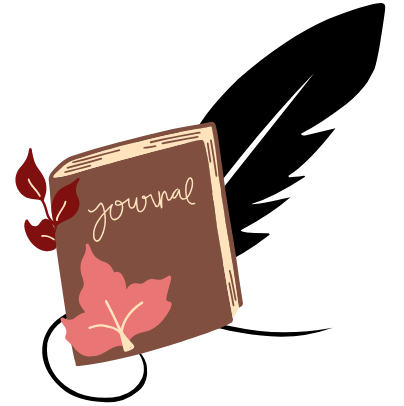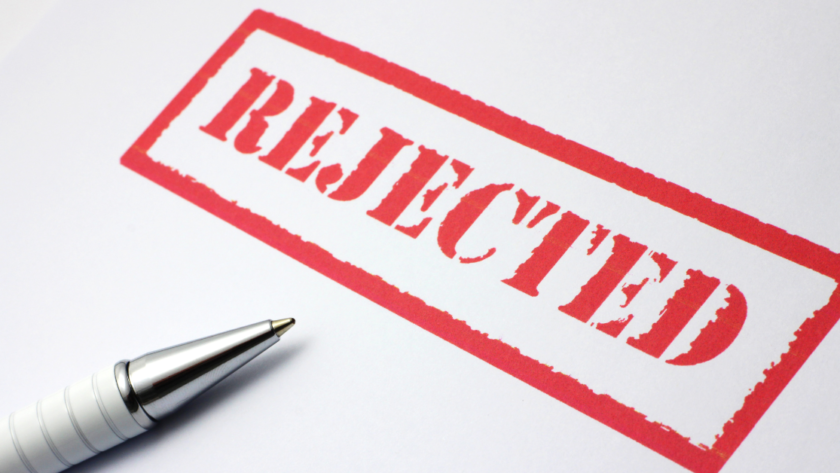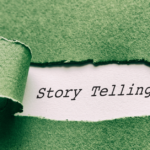As a writer, I’ve experienced the rollercoaster of emotions that come with submitting work. The anticipation, the hope, and yes, the crushing disappointment of rejection.
But I’ve learned that rejection isn’t the end of the road—it’s a crucial part of the writing process.
Understanding the Psychology of Rejection
Our brains process rejection similarly to physical pain. That’s why a form letter declining your short story can feel like a punch to the gut. But just as we build physical endurance, we can cultivate emotional resilience.
Reframing rejection as a learning opportunity is a powerful strategy. Instead of seeing it as a judgment on your worth as a writer, consider it feedback on this particular piece at this particular time.
The publishing industry is highly subjective. What doesn’t resonate with one editor might be exactly what another is looking for.
J.K. Rowling’s experience with “Harry Potter and the Philosopher’s Stone” is a prime example. The book was rejected by 12 publishing houses before finding a home.
If she had given up after the first, or even the eleventh rejection, the wizarding world might never have come to life!
Practical Strategies for Handling Rejection
Set Rejection Goals
It might sound counterintuitive, but aiming for a certain number of rejections can help desensitize you to the sting and keep you actively submitting.
Some writers swear by the “100 rejections” challenge, where the focus shifts from avoiding rejection to accumulating it as a badge of perseverance.
Develop a Support System
Joining writing groups, attending workshops, or connecting with other writers online provides invaluable perspective and encouragement.
Sharing experiences and hearing others’ rejection stories reminds us that every writer faces rejection—we’re in good company!
Allow Yourself to Feel Disappointed (Briefly)
When you receive a rejection, it’s natural and healthy to acknowledge your emotions. Set a time limit—maybe 24 hours—to process your feelings, then get back to work.
Review Rejections Constructively
If a rejection offers specific advice, consider it carefully, but remember that it’s just one person’s opinion. For form letters, don’t read too much into them.
Maintain Creative Momentum
Don’t let rejections halt your writing process. Keep generating new ideas, working on many projects, and honing your craft.
This approach improves your skills and ensures that your writing career doesn’t hinge on any single piece’s success or failure.
Create a Rejection File
Many successful authors keep a file of all their rejection letters. This serves as a tangible reminder of your perseverance and can be incredibly motivating when you finally achieve that coveted acceptance.
Redefining Success and Failure
Rejection doesn’t define you as a writer—your dedication to your craft does. Every rejection proves that you’re actively pursuing your dreams, taking risks, and putting your work out there.
That’s something to be proud of, regardless of the outcome.
Exploring Alternative Paths
The publishing landscape is constantly evolving. The rise of self-publishing and digital platforms has opened up new avenues for writers.
While traditional publishing still holds significant prestige, it’s no longer the only path to reaching readers.
If you’re facing consistent rejections, exploring choice publishing options might be worthwhile.
Diversifying Your Writing Portfolio
Putting all your eggs in one basket can be risky. If your novel is making the rounds with agents, try your hand at short stories or articles.
Success in one area can boost your confidence and potentially open doors in others.
Separating Personal Identity from Writing Identity
While writing may be a basic part of who you are, a rejection of your work is not a rejection of you as a human being.
Cultivating interests and relationships outside of writing provides a healthy perspective and emotional balance.
Celebrating Small Wins
Keep a “wins” folder alongside your rejection file. Include positive feedback, acceptances (no matter how small), and personal writing achievements.
On tough days, revisiting these can reignite your motivation and remind you of your progress.
Cultivating a Growth Mindset
Approaching rejection with a growth mindset changes it into an opportunity to learn and improve. This doesn’t mean agreeing with every piece of feedback, but approaching criticism with curiosity as opposed to defensiveness can lead to significant growth as a writer.
The Power of Persistence
Many now-famous works were initially rejected many times. Beatrix Potter’s “The Tale of Peter Rabbit” was rejected so many times that she initially self-published it.
It went on to become one of the best-selling children’s books of all time.
Practical Tips for Dealing with Rejection
1. Create a Submission Tracking System
Keeping track of where you’ve submitted your work, when, and the responses you’ve received is crucial.
This organization helps you avoid accidentally resubmitting to places that have already rejected your work and allows you to follow up on submissions that haven’t received a response.
2. Set Realistic Expectations
Understanding the typical response times for different publications or agents can help manage your anxiety. Some may respond within weeks, while others might take months.
Knowing this prevents unnecessary worry and allows you to focus on your writing.
3. Celebrate the Act of Submitting
Submitting your work takes courage. Celebrate each submission as an accomplishment, regardless of the outcome.
This positive reinforcement can help build resilience and motivation.
4. Analyze Patterns in Rejections
If you’re receiving similar feedback from many sources, it might be worth considering. Look for patterns in the rejections you receive.
Are there common themes or suggestions?
This information can be invaluable for improving your work.
5. Take Breaks When Needed
If you’re feeling overwhelmed by rejections, it’s okay to take a step back. Give yourself permission to take a break from submitting and focus on writing or other aspects of your life.
This can help you return to submissions with renewed energy and perspective.
6. Seek Personalized Feedback
While not always possible, try to get personalized feedback on your work. This might come from writing groups, beta readers, or professional editors.
Constructive criticism from these sources can help you improve your work before submitting it.
7. Practice Self-Care
Rejection can take an emotional toll. Prioritize self-care activities that help you recharge and maintain a positive outlook.
This might include exercise, meditation, spending time in nature, or engaging in hobbies unrelated to writing.
8. Learn from Successful Authors’ Rejection Stories
Many successful authors have shared their experiences with rejection. Reading these stories can be incredibly inspiring and provide valuable perspective.
Stephen King’s “On Writing” and other memoirs by authors often include insights on dealing with rejection.
9. Use Rejection as Fuel
Some writers find that rejection fuels their determination. Channel the emotions from rejection into your writing.
Use it as motivation to prove the doubters wrong and to push yourself to improve.
10. Consider Professional Development
Attending writing workshops, conferences, or taking courses can help you improve your craft and understand the industry better.
This knowledge can lead to stronger submissions and a better understanding of why rejections happen.
The Role of Critique Partners and Beta Readers
Critique partners and beta readers play a crucial role in preparing your work for submission. These individuals provide valuable feedback that can help you identify and address potential issues before an editor or agent sees your work.
Finding the Right Critique Partners
Look for critique partners who write in similar genres or have complementary skills. Online writing communities, local writing groups, or writing conferences are great places to connect with potential critique partners.
Giving and Receiving Constructive Criticism
Learning to give and receive constructive criticism is an essential skill for writers. It helps you develop a thicker skin for professional rejections and improves your ability to self-edit.
Implementing Feedback Effectively
Not all feedback will be relevant or helpful. Learn to discern which suggestions align with your vision for the work and which might take it in a direction you’re not comfortable with.
Implementing feedback effectively can significantly improve your chances of acceptance.
The Importance of Timing in Submissions
Timing can play a significant role in whether your work is accepted or rejected. Consider factors such as:
Seasonal Themes
Some publications have specific themes for different times of the year. Submitting work that aligns with these themes can increase your chances of acceptance.
Market Trends
While you shouldn’t write solely based on trends, being aware of what’s now popular in your genre can help you target your submissions more effectively.
Publication Cycles
Many publications have specific reading periods or submission windows. Submitting outside of these periods often results in automatic rejections.
The Impact of Social Media on Writers and Rejection
Social media has changed how writers interact with the publishing world and handle rejection.
Building a Platform
Many publishers now look at a writer’s social media presence when considering submissions. Building a platform can sometimes help offset rejections by demonstrating your ability to connect with potential readers.
Sharing Rejection Experiences
Some writers choose to share their rejection experiences on social media. This can be a double-edged sword—it can provide support and community and potentially impact professional relationships if not handled carefully.
Connecting with Industry Professionals
Social media provides opportunities to connect with agents, editors, and other industry professionals. These connections can sometimes lead to submission opportunities or valuable insights into the submission process.
The Psychology of Persistence
Understanding the psychological aspects of persistence can help you maintain motivation in the face of rejection.
The Growth Mindset in Action
Embracing a growth mindset means viewing challenges, including rejections, as opportunities for learning and improvement as opposed to as failures.
Building Resilience
Each rejection you face and overcome builds your resilience. This resilience helps in your writing career but can also positively impact other areas of your life.
The Role of Self-Compassion
Practicing self-compassion when facing rejection is crucial. Treat yourself with the same kindness and understanding you would offer a friend in a similar situation.
Alternative Paths to Publication
While traditional publishing stays a goal for many writers, exploring choice paths can open up new opportunities and potentially lead to success.
Self-Publishing
Self-publishing has become increasingly viable and respected. It offers greater control over your work and needs more personal investment in areas like editing, cover design, and marketing.
Hybrid Publishing
Hybrid publishing models combine elements of traditional and self-publishing. These can be a good option for writers who want more control than traditional publishing offers but don’t want to handle every aspect of the publishing process themselves.
Literary Magazines and Online Publications
Submitting to literary magazines and online publications can help build your writing resume and gain exposure. Many well-known authors started by publishing in smaller venues.
The Role of Networking in Overcoming Rejection
Networking plays a crucial role in a writer’s career and can help mitigate the impact of rejections.
Attending Writing Conferences
Writing conferences offer opportunities to meet agents, editors, and fellow writers. These connections can lead to valuable insights, submission opportunities, and support networks.
Joining Professional Organizations
Organizations like the Society of Children’s Book Writers and Illustrators (SCBWI) or the Science Fiction and Fantasy Writers of America (SFWA) offer resources, networking opportunities, and sometimes direct submission opportunities to members.
Participating in Online Writing Communities
Online forums, social media groups, and writing platforms can provide support, feedback, and sometimes lead to publication opportunities.
The Importance of Continuous Learning
Rejection often highlights areas where we can improve our craft. Embracing continuous learning is key to overcoming rejection and achieving success.
Reading Widely in Your Genre
Staying current with the latest publications in your genre helps you understand market trends and reader expectations.
Studying Craft Books
Books on writing craft can provide valuable insights and techniques to improve your writing.
Attending Workshops and Webinars
Workshops and webinars offer opportunities to learn from experienced writers and industry professionals.
The Role of Agents in Handling Rejection
For writers seeking traditional publication, working with a literary agent can change the dynamics of dealing with rejection.
How Agents Buffer Rejection
Agents often act as a buffer, handling rejections from publishers and providing a professional perspective on the feedback received.
When to Consider Seeking Agent Representation
Understanding when your work is ready for agent representation and how to approach the querying process is crucial.
Building a Relationship with Your Agent
A strong author-agent relationship can provide support and guidance through the ups and downs of the publishing process, including rejections.
The Impact of Rejection on Mental Health
Repeated rejections can take a toll on a writer’s mental health. It’s important to recognize the potential impact and have strategies in place to maintain well-being.
Recognizing Signs of Burnout
Learn to recognize signs of burnout, such as loss of motivation, increased cynicism, or physical symptoms like headaches or insomnia.
Seeking Professional Support
Don’t hesitate to seek support from mental health professionals if rejection is significantly impacting your well-being.
Balancing Writing with Other Aspects of Life
Maintaining a balance between your writing life and other aspects of your life can provide perspective and resilience when facing rejection.
The Role of Revision in Overcoming Rejection
Revision is a crucial part of the writing process and can be key to turning rejections into acceptances.
The Art of Self-Editing
Developing strong self-editing skills can help you polish your work before submission, potentially reducing rejections.
When to Revise and When to Move On
Learning to discern when a piece needs more revision and when it’s time to move on to new projects is an important skill for writers.
Using Rejection Feedback in Revision
When rejections come with specific feedback, use this information to guide your revisions and strengthen your work.
The Importance of Market Research
Understanding the market you’re submitting to can significantly impact your success rate and help you handle rejections more effectively.
Researching Publication Guidelines
Carefully reading and following submission guidelines for each market you send to shows professionalism and increases your chances of acceptance.
Understanding Audience and Market Fit
Knowing the audience for different publications or publishers helps you target your submissions more effectively, reducing the likelihood of rejection because of poor fit.
Staying Informed About Industry Changes
The publishing industry is constantly evolving. Staying informed about changes in the industry can help you adapt your submission strategies and understand the context of rejections.
Key Takeaways for Handling Rejection as a Writer
- Rejection is a normal part of the writing process, not a reflection of your worth as a writer.
- Reframe rejection as a learning opportunity and a sign that you’re actively pursuing your goals.
- Build a support network of fellow writers who understand the challenges of the industry.
- Keep writing and submitting—don’t let rejection halt your creative momentum.
- Consider keeping a rejection file as a testament to your perseverance.
- Explore choice publishing options if traditional routes aren’t working out.
- Cultivate a growth mindset, viewing each rejection as a stepping stone to improvement.
- Practice self-care and maintain a balance between your writing life and other aspects of your life.
- Use rejection feedback constructively to guide revisions and improve your work.
- Stay informed about the publishing industry and continue to develop your craft through continuous learning.
People Also Asked
How many rejections do most authors get?
Most authors receive dozens, if not hundreds, of rejections before their work is accepted.
Even best-selling authors like J.K. Rowling and Stephen King faced significant rejection early in their careers. Persistence is key in the writing world, as rejections are often part of the journey to success.
What is the average acceptance rate for literary submissions?
The average acceptance rate for literary submissions can vary depending on the publication or contest.
For prestigious literary magazines, the acceptance rate is often less than 1%. However, smaller or niche publications may have slightly higher rates, typically ranging from 5% to 15%.
How long should I wait before resubmitting a rejected piece?
It’s generally a good idea to revisit a rejected piece and consider any feedback you received before resubmitting.
This can take anywhere from a few weeks to a few months, depending on how much revision is needed. If the rejection was a form letter, you may want to resubmit elsewhere immediately while continuing to refine your work.
Can I send my work to many places at once?
Yes, this is called simultaneous submission. Most literary journals and publishers allow it, but you should check their guidelines to confirm.
If you’re submitting simultaneously, make sure to notify all parties immediately if your piece is accepted elsewhere.
How do I know if my writing is good enough to submit?
Good writing is subjective, but feedback from beta readers, writing groups, or mentors can help you gauge whether your piece is ready for submission.
If your writing has gone through multiple revisions and resonates strongly with readers, it’s likely worth submitting.
What’s the difference between a form rejection and a personal rejection?
A form rejection is a standard, impersonal response sent to many writers, often without specific feedback.
A personal rejection, on the other hand, includes comments or critiques specific to your work. Personal rejections are valuable as they often signal your work is close to being accepted or has potential.
Should I give up on a piece after many rejections?
No. Many successful works were rejected multiple times before finding the right publisher. Consider revising the piece based on feedback, experimenting with different audiences or publications, or even setting it aside temporarily before revisiting it with fresh eyes.
How can I improve my query letter to avoid rejections?
A strong query letter should:
- Be concise and professional.
- Clearly state the hook or unique aspect of your work.
- Provide a brief synopsis of the piece.
- Highlight your credentials or relevant writing experience. Personalize the letter for each submission, addressing the recipient by name and referencing why your work is a good fit for them.
Are self-published authors taken seriously by traditional publishers?
Yes, especially if the self-published work has a strong sales record or significant reader engagement.
Success in self-publishing can demonstrate market appeal and dedication to your craft, which many traditional publishers respect.
How do I deal with negative feedback from beta readers?
Take a step back and process the feedback objectively. Not all criticism will be helpful, so focus on patterns or repeated comments.
View it as an opportunity to strengthen your work rather than a personal attack. If the feedback feels overwhelming, take a break before revisiting it with a clear mind.




